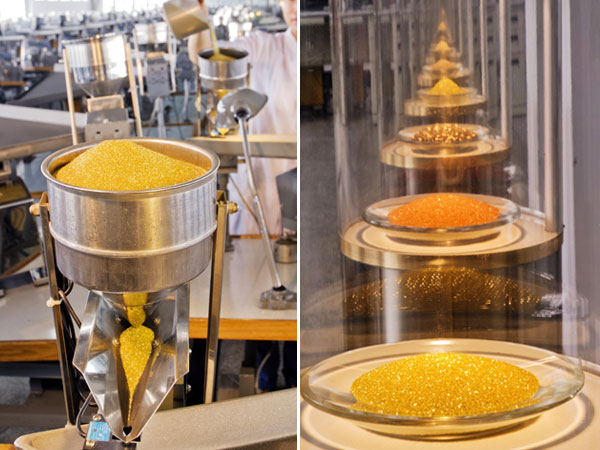Unveiling the Mysteries of Synthetic Diamond Powder Production Process
Diamonds have long captivated the human imagination with their brilliance, hardness, and beauty. While natural diamonds are treasures of the earth, synthetic diamond powder opens up a world of possibilities in various industries, from cutting and grinding to polishing and advanced technology applications. The production process of synthetic diamond powder is a fascinating journey that combines science, technology, and innovation to create the hardest material known to man. As professional manufacturer, we will introduce how synthetic diamond powder is produced and the steps involved in transforming raw materials into the ultimate superabrasive material.
Step 1: Raw Material Selection
The journey of synthetic diamond powder production begins with the careful selection of high-quality raw materials. Typically, graphite or carbon sources are chosen as the precursor materials, as they provide the carbon atoms needed to grow diamond crystals. The purity, particle size, and characteristics of the raw materials play a crucial role in determining the quality and properties of the synthetic diamond powder that will be produced.
Step 2: High-Pressure High-Temperature (HPHT) Process
The heart of synthetic diamond powder production lies in the high-pressure high-temperature (HPHT) process, which replicates the natural conditions under which diamonds are formed deep within the earth. In this process, the selected raw materials are subjected to extreme pressure and temperature inside a diamond anvil cell or a cubic press. The carbon atoms in the raw materials reorganize and crystallize into diamond structures, creating synthetic diamond crystals that form the basis of the powder.
Step 3: Crushing and Milling
Once the synthetic diamond crystals are grown through the HPHT process, they are carefully extracted and undergo crushing and milling processes to break them down into smaller particles. This step is crucial in controlling the particle size distribution and shape of the synthetic diamond powder. Various milling techniques, such as ball milling or jet milling, are utilized to achieve the desired particle sizes and morphologies that suit the intended applications of the synthetic diamond powder.
Step 4: Classification and Purification
After the synthetic diamond crystals have been milled into powder form, they undergo classification and purification processes to remove impurities, control particle size distribution, and ensure uniform quality. Classification techniques, such as sieving or air classification, are used to separate the synthetic diamond powder into different size fractions. Purification methods, such as acid digestion or thermal treatment, may also be employed to enhance the purity and quality of the synthetic diamond powder.
Step 5: Surface Coating and Functionalization
In some cases, synthetic diamond powder may undergo surface coating or functionalization to improve its performance and compatibility with specific applications. Surface coatings, such as metal or polymer coatings, can enhance the adhesion, dispersibility, lubrication, or thermal conductivity of the synthetic diamond powder, making it more effective in cutting, grinding, or other industrial processes.
Step 6: Quality Control and Testing
Throughout the production process of synthetic diamond powder, stringent quality control measures and testing protocols are implemented to ensure that the final product meets the required specifications and performance standards. Physical, chemical, and structural analyses are conducted to assess the purity, particle size distribution, hardness, and other key properties of the synthetic diamond powder, guaranteeing that it meets the expectations of customers and industry standards.
The production process of synthetic diamond powder is a remarkable journey that transforms raw materials into a superabrasive material with unparalleled hardness, durability, and versatility. By harnessing the power of high-pressure high-temperature synthesis, crushing, milling, classification, and surface treatment techniques, synthetic diamond powder manufacturers are able to create a high-performance material that drives innovation and efficiency across a wide range of industries. Whether used in precision cutting tools, grinding wheels, polishing compounds, or advanced technological applications, synthetic diamond powder represents the pinnacle of material science and engineering. Join the revolution of synthetic diamond powder and unlock the potential of this extraordinary material to elevate your projects, products, and performance to new heights of excellence.
Inquiry
Please leave us your requirements, we will contact you soon.
 English
English Español
Español Русский
Русский

